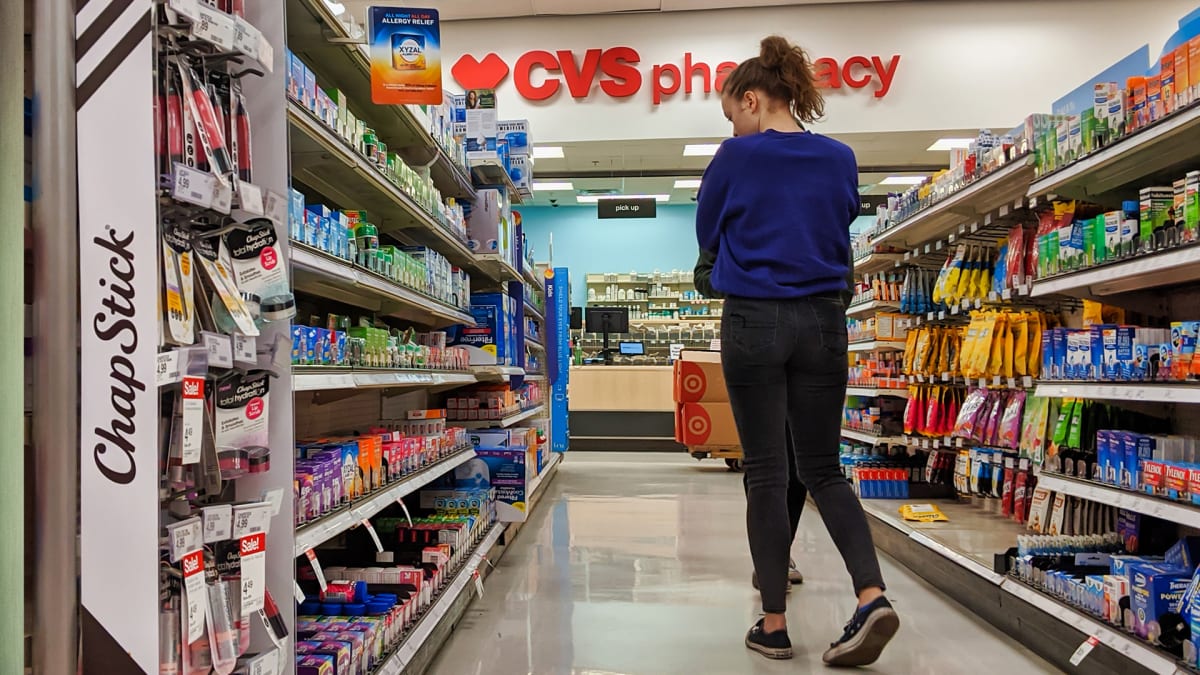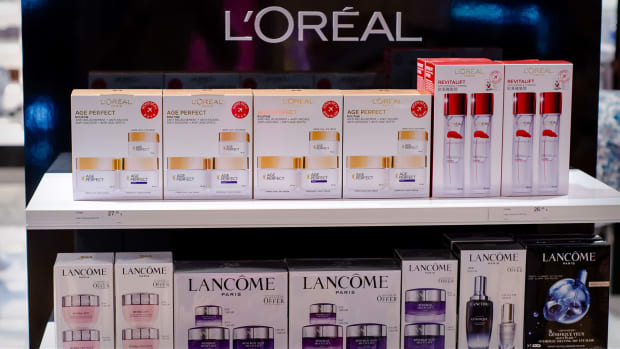
If you've ever shopped at a drugstore for anything from shampoo to makeup remover, chances are, you've bought a L'Oreal (LRLCF) product. The global beauty and personal care conglomerate, which boasts brands like Garnier, Maybelline, Essie, Kiehl's, Prada, and Yves Saint Laurent in its portfolio, has been a leader in its class since its founding in 1909.
Today, it's the largest cosmetics company known mostly for its more affordable products (think hairspray and sunscreen) found at your local Target (TGT) or CVS (CVS). But the Parisian conglomerate isn't satisfied with "just" being a consumer juggernaut for the average big-box aisle-browser. It has its eye set on something much loftier, according to leadership at the company's annual results conference in February.

Shutterstock
L'Oreal Aims to Target a Growing Demographic
L'Oreal splits its businesses across a few main verticals: brands at affordable price points are considered "consumer products," and include its namesake brand, L'Oreal Paris, Garnier, Maybelline and NYX, among others. Its L'Oreal Luxe division includes Yves Saint Laurent, Prada, Armani and Valentino, among others. It also has a sector called Professional Products, which include brands often seen at salons like Redken and Kerastase. L'Oreal's Active Cosmetics vertical includes more personal care products that typically appeal across age and gender, including CeraVe, Vichy, and La Roche-Posay.
Most of these products can be picked up at your local drugstore or supermarket. Most of them have been around for years and provide reasonable income and recognition for the brand. They can also be bought on a budget, with a bulk of the aforementioned products costing less than $20 -- some are just a few bucks.
But the company isn't satisfied with "just" being a drugstore brand, instead aiming to elevate the L'Oreal name and break further into the luxury space.
"Our focus is on the upper half of the middle class," L'Oreal group consumer products president Alexis Perakis-Valat said during the annual event. "This group represents two billion people worldwide and thanks to search, makeup tutorials and TikTok influencers, they are becoming more beauty savvy."
For Some, Luxury Beauty Is The Future
As higher-priced luxury beauty becomes more visible on social media, more folks grapple to get their hands on "cult products," and "investment" brands. A bottle of Alien eau de parfum by L'Oreal-owned Mugler, for example, is one of the most viral perfumes on TikTok with 18.4 billion views -- and sets you back $180 for a three ounce bottle.
Leaning into its luxury appeal, L'Oreal also re-launched one of its priciest brands, Carita, which is a popular French spa brand. Obtaining one of its products will set you back hundreds of dollars -- and a plane ticket if you aren't in France; Carita mostly sells in select domestic locations at the minute.
Surprisingly, however, much of L'Oreal's success hinges not on the French but rather its Chinese market; 25% of sales in its "ultra prestige market," -- which accounts for products and creams over $200 -- come from China alone.
It's this two-pronged approach to luxury and affordability that L'Oreal bets is a winning combo.
"We are able to premiumise the mass market [channels] in the U.S. ... At the same time in countries that are developed ... we can keep growing through affordability," dermatological beauty president Myriam Cohen-Welgryn said.







